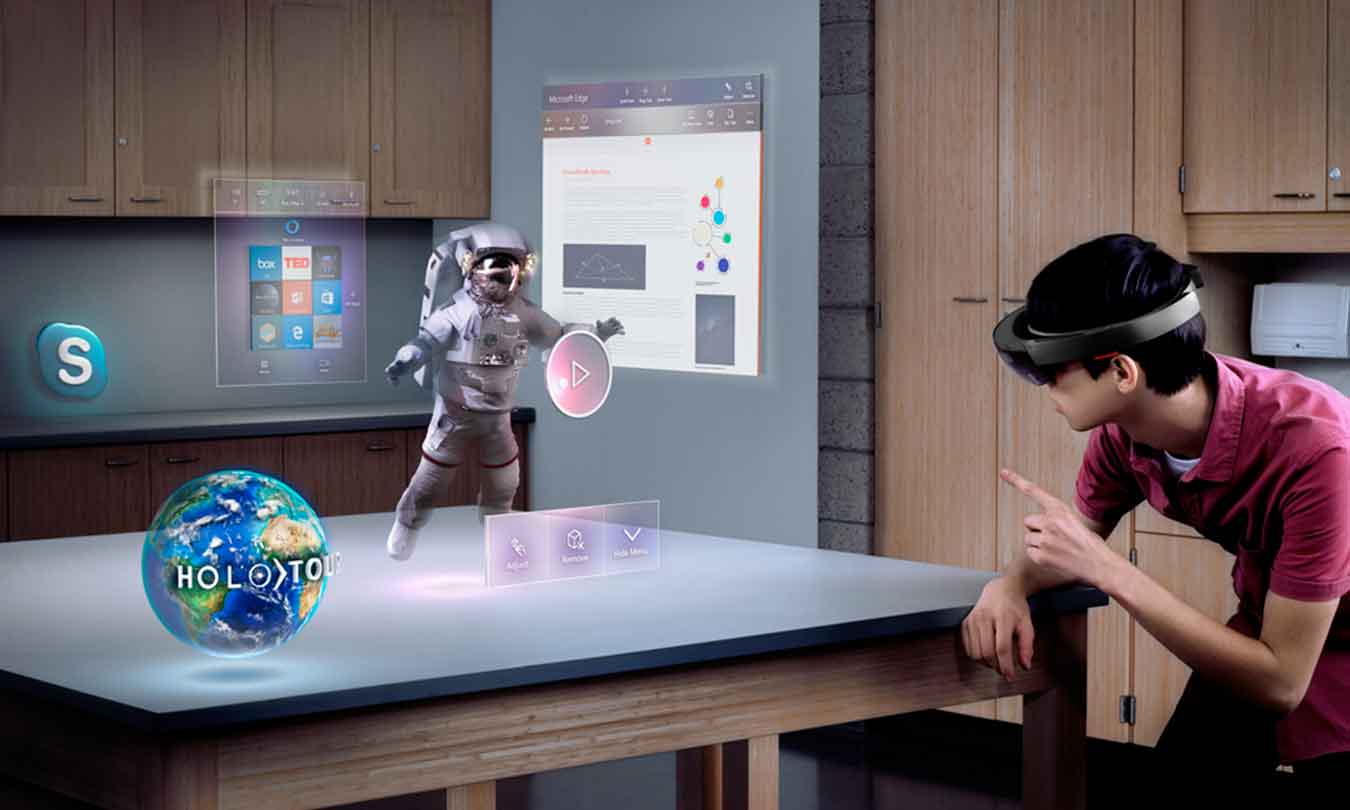Augmented Reality is still a Pre-Birth Technology
Before you ask yourself what exactly augmented reality is here are a few examples of products that are based on augmented reality technology: Pokemon Go, Google Glasses,
Microsoft Hololens, the IKEA app, Snapchat and MSQRD masks have all implemented augmented reality or AR technology.
Augmented reality is a technology which allows us to augment our real world with computer-generated input such as 3D graphics, videos, sound, GPS data. In contrast to virtual reality – which replaces your real world with a simulated one – augmented reality is simply enhancing your perception of the real world.

Try It!
Currently, all augmented reality products use either glasses which are equipped with a display or they use a display in combination with a camera like your smartphone. If you like you can try out how AR looks like by placing virtual furniture into your room or you can play Pokémon in reality. It will become a little bit more expensive when you want to test augmented reality with glasses. Microsoft HoloLens are currently the best-known glasses. The HoloLens currently ships for $3,000 primarily to developers.
Smartphone AR is Useless
When I tested AR for the first time with my phone I was actually very disappointed. The fact that you are forced to use a phone to see the “augmented reality” is a real frustration. A year ago I literally downloaded all available AR apps from the Google Play Store and I tested every app possible. I went even that far to make a short opinion poll in a supermarket. I opened the IKEA app, showed people that they are able to place virtual furniture in their living room before they actually buy the product. Please note that I was neither endorsed or paid for this. The reactions of nearly all people I have asked were the same as mine. They were very surprised that it is possible to place virtual furniture in any room. Subsequently, when I asked them whether they would use it the next time they plan to buy new furniture nearly all of them said no. Arguments ranged from “this does not look or seem real”, “I prefer to sit on my sofa before I buy it” to “this app sucks”. Well, I did this small survey in the technical anxiously Germany but I already expected a rejection of this smartphone based AR technology. Just a few months ago, when Pokémon GO was introduced many AR enthusiasts praised it as the beginning of an AR era. A point in time where people start using other AR apps except Pokémon GO. But what did actually happen since then? Nothing. Smartphone based augmented reality is poor.
AR with Glasses, that’s the thing?

Right now while I am typing this, the CES 2017 is taking place in Las Vegas. The CES is actually all about consumer technology like smartphones and TV’s but some businesses also use the CES to showcase innovations which are not yet mass market ready. This year it seems that the innovative part of CES was all about augmented reality. Lenovo showed up with its new Lenovo New Glass C200. Lenovo’s C200 is combining AR software with artificial intelligence, sounds very hot right? Another company called ODG introduced two more consumers focused AR glasses called R-8 and R-9. While many companies are working or introducing AR glasses the most important distinction is that glasses let you enjoy an augmented reality hands-free. Still glasses like the HoloLens will give you a feeling of carrying a whole computer on your nose. Not good at all.
AR beyond Smartphones and Glasses
I personally think that the future of AI does not lie either in phones or glasses. The question we need to ask ourselves is: What’s next? What is coming after smartphones? What is coming after glasses? Magic Leap is one very hyped AR technology company which seems to work on this question. There is no real information available about Magic Leap as all their communication is based on super strong NDOs. The company describes that their technology “enables users to interact with digital devices in a completely visually cinematic way”. The question what comes after glasses was a driver for investments. Magic Leap has currently a total equity funding of $1.39B. A binocular AR experience is most likely the future and the mass market birth of augmented reality products and applications.


Leave a Reply